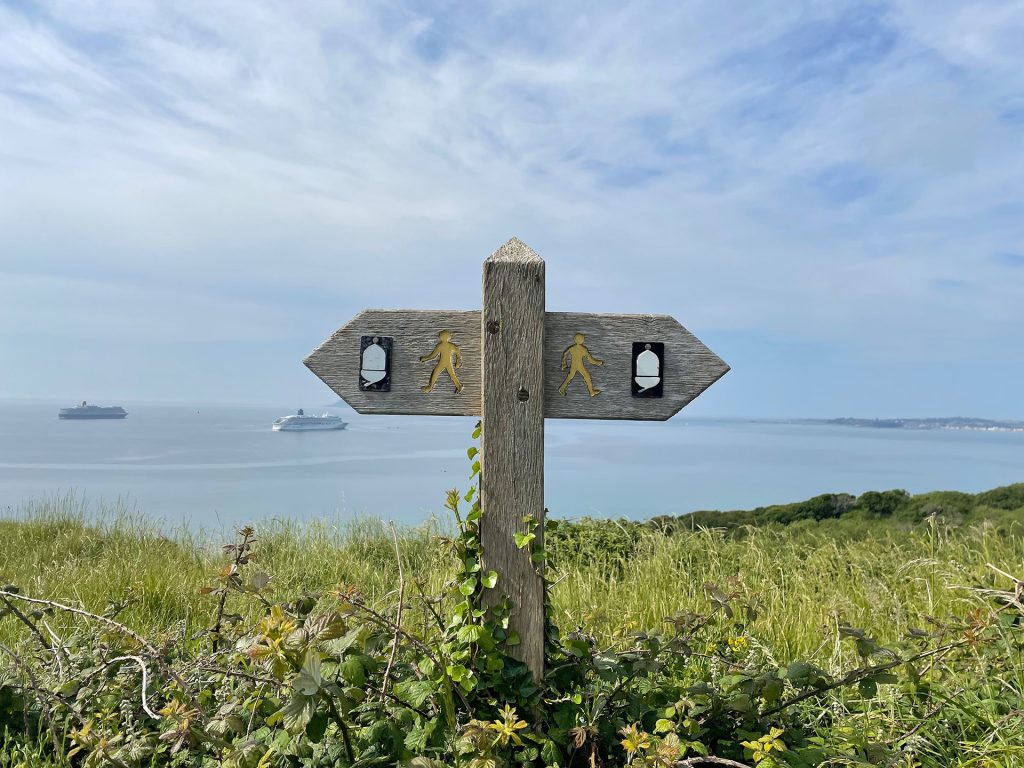Facebook is home to over 2.5 billion users, making it the biggest social network in the world. The majority of these users are adults with expendable incomes and a variety of tastes. It’s an advertiser’s dream, which is why over $25 billion is spent on Facebook ads every single year.
As a business owner or influencer, Facebook is the perfect platform on which you can grow your business and improve your sales. That’s what we’ll focus on here.
What is organic reach on Facebook?
Organic reach is when consumers engage with your Facebook posts without you having to pay for promotion. It’s the holy grail of Facebook marketing, because it generates passive income and means you’re not spending money to create engagement.
Facebook paid ads can be an effective way to boost traffic, but why spend money when you can get that traffic and engagement for free?
Understanding Facebook’s newsfeed algorithm
The Facebook newsfeed algorithm is extremely complicated, but there are a few simple assumptions we can make to understand how it works.
The algorithm has evolved over the years and has undergone some important changes over the last 12 months in particular. It’s now geared more towards users, which means that the newsfeed shows more content that users are likely to enjoy.
In the past, you could pay to get priority on every relevant user’s newsfeed, and your posts would show alongside content from their close friends. These days, newsfeeds are about engagement and activity, with Facebook stating that the ultimate goal is to “spark conversations”.
This allows your marketing team to focus on a number of different methods in order to increase your overall reach. Fortunately for you, we have collated what we feel are the best ways to propel your content to the top of the newsfeed.
How to boost your Facebook organic reach
Here are some of the very best ways to increase your organic reach. Bear in mind that the different methods will have different levels of effectiveness based on the service your page offers. This is why it’s important to look over the stats in order to build your own overall strategy using a variety of these steps.
Step 1: Build your presence and establish your authority
Building your presence is about more than just increasing your posting. You have to set goals and understand how to achieve them, and understanding your niche is a big part of this.
The great thing about Facebook is that there is a niche for everyone. Facebook has hundreds of categories for you to choose from and you can target users who live in specific areas or like specific things.
Start posting content that targets people who will be interested in your niche. Give them content that they can engage with, content that they can share.
Step 2: Publish evergreen content
Evergreen content is vital to extending your organic reach. It refers to content that is not topical, content that is always relevant.
A piece of topical content may highlight an upcoming football match and provide tips and previews, for instance. Evergreen content, however, may tell users how to place bets. The former stops being relevant after a specific time period, the latter stays relevant for years.
The great thing about evergreen content is that it will get shared around the site and can create a never-ending chain of shares, comments, and likes, ones that continue long after you created the content.
It also means that you have content geared towards a wide range of ages. Younger users are more likely to ignore evergreen content and focus only on topical pieces, while senior users are more likely to share content that is many months or years old.
Step 3: Create exclusive groups for your top readers and users
An exclusive, invite-only Facebook group will target users that engage with your content the most. Use this group to share content first, offer exclusive deals and possibly even set up contests for your most engaged followers.
All of this ensures that you give your top readers an impetus to keep reading and sharing the content that you have produced.
Step 4: Use organic post targeting
You can use organic post targeting to highlight specific groups of people in your demographic, and the great thing about Facebook is that it covers most demographics.
Right now, over-65s are the fastest-growing demographic on the site, increasing the effectiveness of posts relating to health, politics, and travel, but you can find a way to make all advertisements work.
Organic post targeting increases engagement rate and ensures you’re reaching the right people.
Step 5: Choose the right time to post
The time of your post can be just as important as the nature of it.
When will your targeted demographics be online? At what point will your posts be most effective?
Estimates suggest that 74% of all high-income social media users have Facebook, and we also know that the site is increasingly popular in working adults (rates of teen users are dropping year-on-year). As a result, it doesn’t make sense to post from 9 AM to 5 PM when everyone is at work. But at the same time, you don’t want to post when everyone else does, as it may get lost in the maelstrom.
Think about your target audience, look at your analytics, and pinpoint the right time to post.
Step 6: Post native videos to Facebook
In 2018, close to 9 out of 10 internet users watched videos on their devices, and a significant number get all of their news and content through online video.
This is the age of on-demand video, and if you want to succeed, you need to follow the trend.
It’s often said that videos will reach 1.35x more people than an image. If you add the video to YouTube, you can even direct Facebook users to your YouTube channel, getting more subscribers while those Facebook engagements increase.
Not only is YouTube a great way to push your content and grow your business, but it can earn you some extra cash on the side. The average rate for YouTube videos is around $4 per 1,000 views, or around $4,000 for a video that hits 1 million views.
Step 7: Test out the right amount of posting
If your posts are seen too often, consumers will get frustrated and become immune to your marketing efforts. If they don’t see them enough, they’ll quickly forget who you are.
Getting the balance right is vital to maximising your reach. Spend a few weeks posting at different frequencies each day and check your analytics to see what works best.
Step 8: Make partnerships
Create partnerships with other Facebook pages and gain mutual benefits as you share audiences and build your trust. Followers will naturally trust a brand if one of their favourite companies endorses it, so these partnerships are essential for increasing your audience.
Step 9: Use social credibility
Social credibility is the backing that other consumers give your brand. If an influencer or reviewer praises your brand and a prospective customer sees it, they will be more likely to trust you.
Research suggests that customer testimonials and reviews can boost your sales by over 60%. Over 9 out of 10 consumers say that they read these reviews before purchasing, and if you don’t have them, you’re missing out on those sales.
Sign deals with influencers, ask customers for reviews, post testimonials, and encourage your staff members to engage with your posts. All of this helps to build that all-important social credibility.
Step 10: Use your email list
Use exist email lists to target users on Facebook. You can invite them to like your page, leave a rating/review, or build demographic profiles to aid with your marketing. You can even encourage them to invite all of their friends, in which case a single email address from a loyal customer could lead to hundreds of likes.
Step 11: Run contests
Everyone loves free stuff and Facebook users are no different.
Run a competition for a free product or service, telling users that if they like, share, and comment on your post, you will enter their details into a prize draw.
Alternatively, ask them to like the page and then invite all of their friends to do the same. These simple tasks are 100% free for your customers and in return, they have a chance to win big, so the majority are happy to join in.
Step 12: Use your personal Facebook page
There is a good chance you have invited all your Facebook friends to like your page. However, the average Facebook user has liked 70 pages and receives over a dozen requests a year from their friends. In other words, there is a good chance they ignored your request and even if they didn’t, your posts will be lost amongst many others.
To encourage organic activity, share your page posts to your personal page. This will increase the chance of your friends seeing them.
Step 13: Grab attention instantly with high-quality copy
High-quality content has two benefits.
Firstly, it encourages repeat visits and ensures that users keep coming back to your page. Secondly, it makes your content more shareable, thus increasing your organic reach.
You can use content writing services for consistent, SEO-ready, shareable content that never fails to impress or engage.
Step 14: Use hashtags correctly
Diving into the latest trends might seem like a great way to increase engagement, but it is not without its issues.
If your chosen hashtag isn’t relevant to your niche, the engagement rate will be low. In other words, the people that click your links and visit your content, won’t be interested in what you have to say or sell.
It’s better to use niche hashtags that are much more relevant to your content. It will increase conversion rates and help your content to stand out more.
Step 15: Be different
Be different, be unique, don’t follow the crowd.
If you can create content that is unique and entertaining, you’re onto a winner. It’s a technique employed by the biggest influencers and the best YouTubers, and it’s one that will all-but guarantee success.
Step 16: Take advantage of Facebook app updates
Facebook, just like Google, regularly updates its algorithm and creates opportunities for the people who act quickly.
Study the changes and act upon them before anyone else. You can use these updates to get your nose ahead and by the time everyone catches up, you’ll have established a strong and unshakable foundation.
Step 17: Use paid marketing
The average cost per click across all Facebook Ads is $1.72. That’s a lot, and when you compare it to free organic content, it’s practically extortionate. However, that includes highly competitive and costly industries, as well as marketers who have yet to streamline and optimise their ad campaigns.
It’s possible to get targeted clicks for a 1/10th of this amount, and those clicks can have a knock-on effect that helps your organic traffic.
Imagine, for instance, that Person A, B, and C all see your ad following a targeted campaign. They are highly relevant and have a lot of friends, and you end up paying $0.5 per click. Of these clicks, Person C loses interest and ignores your content; Person B likes it, but nothing else happens.
Person A, on the other hand, likes, shares, and comments, and that content is then spread to all of their friends. As many of them are into the same things, they also engage with the content. They like, they share, and they spread the word. Even after the ad campaign ends, they are still engaging, and all of that engagement is happening organically from a single $0.50 click!
Step 18: Use unpublished posts
Unpublished posts are another paid marketing method. They are basically ads that aren’t shown on your newsfeed.
These adverts allow you to target multiple different groups with varying types of content, and at no point will you be spamming your existing followers.
Step 19: Focus on high-quality conversions
While increasing your organic traffic is hugely beneficial, it’s important to make sure you’re targeting the right users and not simply chasing the big numbers.
10,000 relevant followers are better than 100,000 generic ones.
Engagement is key these days. Sponsors and influencers are finally waking up to the idea that follower numbers and likes don’t matter, and that it all comes down to how many people actually engage with the content.
Putting it all together
There are clearly a lot of steps to consider here, but they don’t all need to be implemented at once. Facebook marketing is not something you should rush. You need to plan properly, analyse at every step, and ensure that your content is getting to the right people and having the right results.






